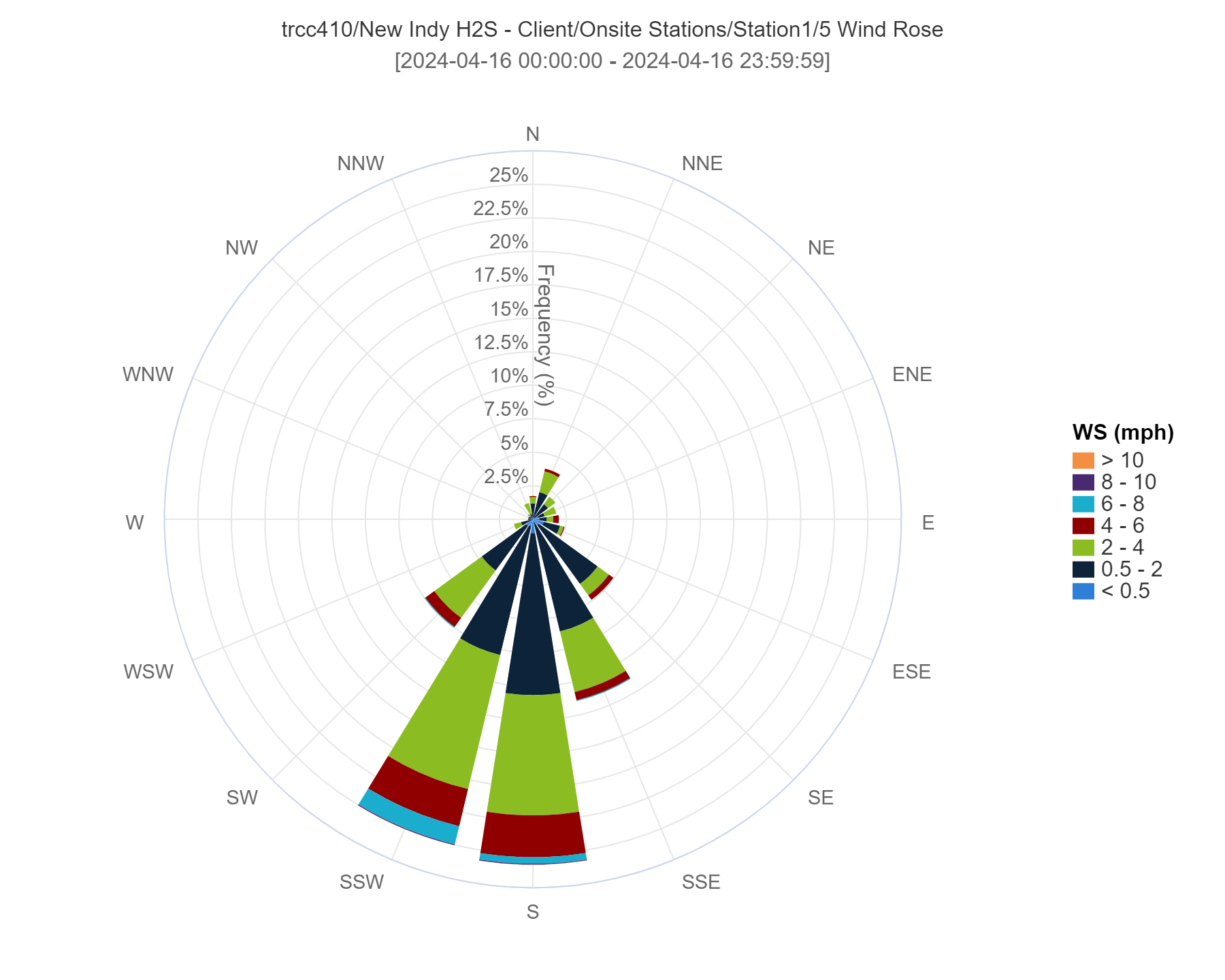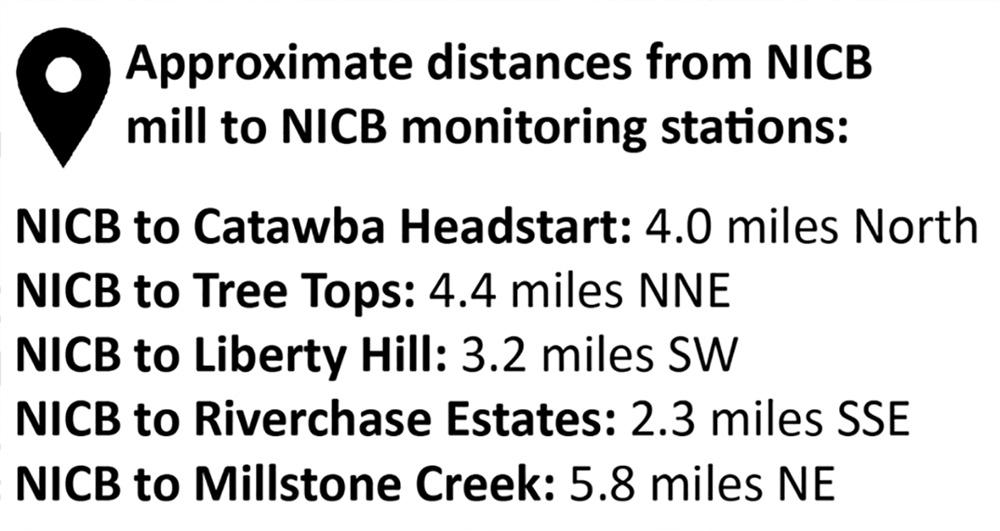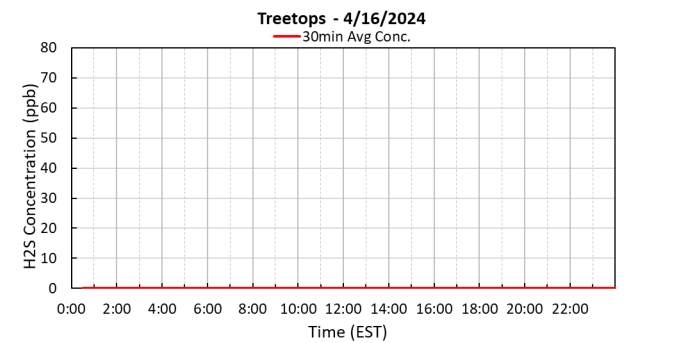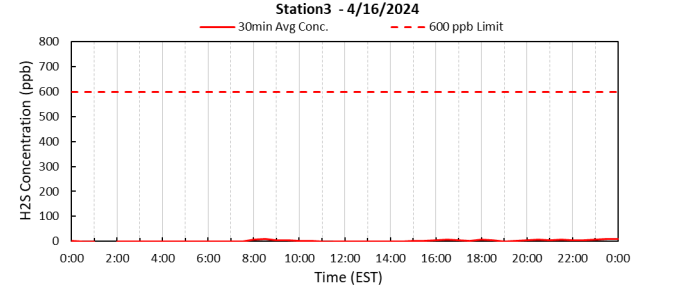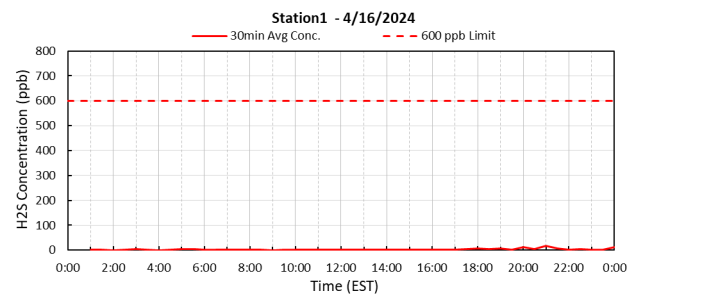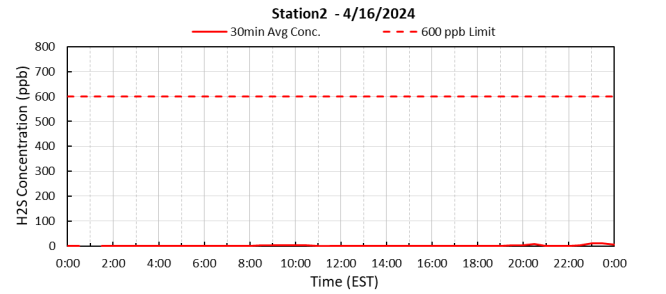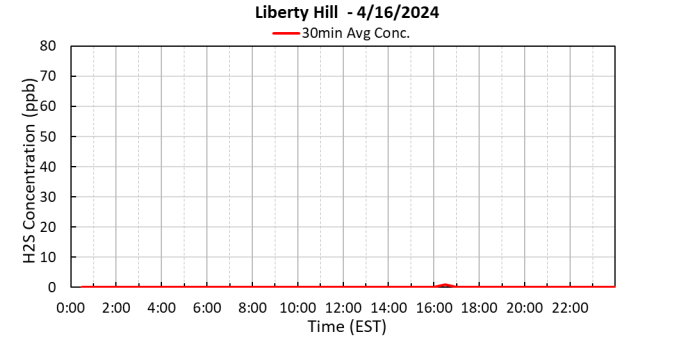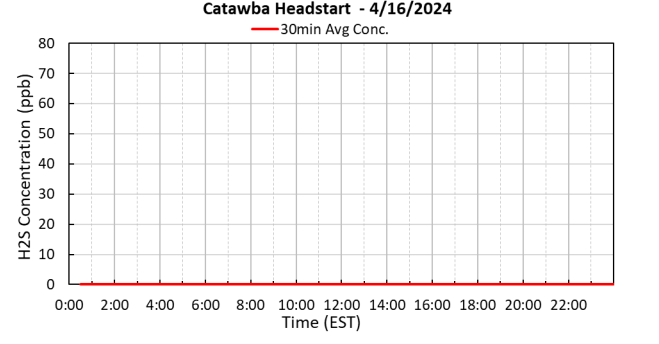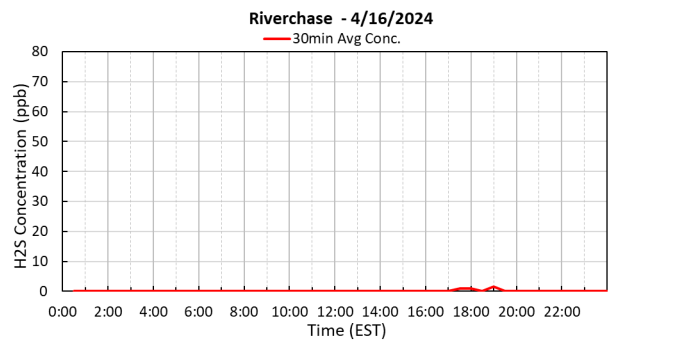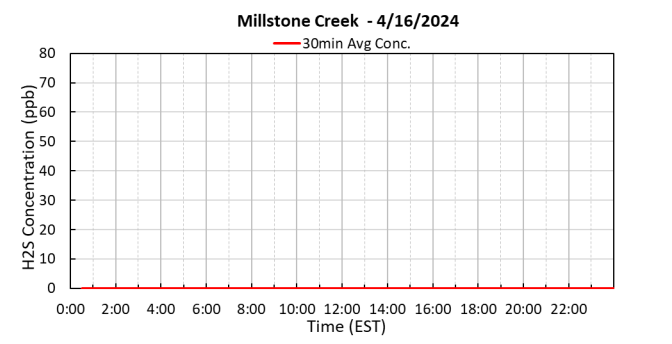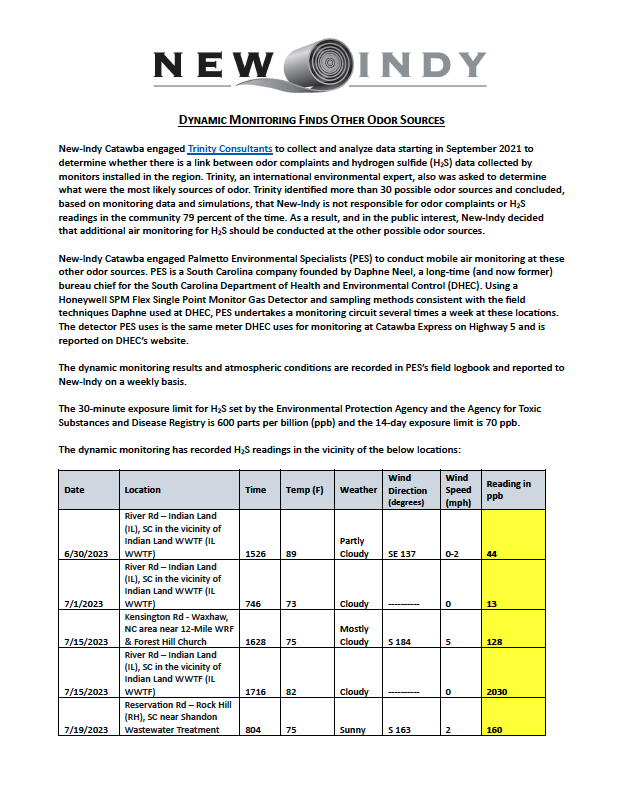Daily Air Emissions Report
New-Indy is continuously monitoring hydrogen sulfide in various locations both at the Catawba Mill and in surrounding neighborhoods. The report below shows hydrogen sulfide levels as reported by New Indy. The report is updated daily.
From May 13 – June 29, 2021, the Environmental Protection Agency (EPA) reported the results of daily hydrogen sulfide samplings from 10 different locations in York and Lancaster Counties, South Carolina, and Union County, North Carolina. Those reports can be accessed via the Report Date dropdown menu on the top right-hand side of the map.**
Thereafter, New-Indy and the South Carolina Department of Health and Environmental Control (SCDHEC) each began collecting data from their own monitoring stations surrounding the New-Indy Catawba mill. New-Indy placed five of its monitoring stations in close proximity to terminated EPA monitors and SCDHEC installed three monitoring stations of its own. In the interactive map above, you can see the location of each New-Indy and SCDHEC monitoring station and their corresponding data. The full EPA and New-Indy daily reports can be accessed from the Daily Reports below. Full SCDHEC reports beginning on June 29, 2021, can be found HERE.
**Note: DHEC’s Catawba Express monitor failed on Oct. 14, 2021, and the monitor from DHEC’s Catawba River site was used to replace the Catawba Express monitor from Oct. 18, 2021-Jan. 9, 2022. The Catawba River monitor was restored on Jan. 10, 2022.
Download Daily Reports
Do Not Delete. Leave at the top of the list at all times
Please do not remove this accorsion. This is used to make the second accordion closed upon load.
Dynamic Monitoring Finds Other Odor Sources
Monitoring has recorded elevated H2S readings at several locations
Expert Report Identifies Sources of Area Odor Complaints
Report conducted by engineering firm Trinity Consultants shows significant sources of odor in the region; majority unrelated to New-Indy paper mill
New-Indy Catawba announced the release of a new report, the New-Indy Catawba Odor & Complaint Analysis, prepared by an expert environmental firm, which concludes that New-Indy Catawba is not the source of odor in the Catawba region 79% of the time.
Trinity Consultants collected data and analyzed more than 5,600 air flow paths for complaint- and monitor-based events in the Catawba region between June 1, 2021, and Dec. 31, 2022. The report also identified more than 30 sites in the Catawba region other than New-Indy Catawba are potential sources of odor, including community and industrial wastewater treatment facilities, sanitary wastewater pumping stations, industrial operations, landfills, and farms.
Dynamic Monitoring Finds Other Odor Sources
New-Indy Catawba engaged Trinity Consultants to collect and analyze data to determine whether there is a link between odor complaints and hydrogen sulfide (H2S) data collected by monitors in the region. Trinity, an international environmental expert, was also asked to determine what were the most likely sources of odor.
Trinity identified more than 30 possible odor sources and concluded, that New Indy is not responsible for odor complaints or H2S readings in the community 79% of the time. As a result, and in the public interest, New-Indy decided that additional air monitoring for H2S should be conducted at the other possible odor sources.
Dynamic Monitoring Finds Other Odor Sources
Monitoring has recorded elevated H2S readings at several locations
KEY:
![]() Static Community Monitor Location
Static Community Monitor Location![]() New-Indy Catawba
New-Indy Catawba![]() Odor Source
Odor Source![]() *Elevated Detection Location
*Elevated Detection Location
*Click checkmarks to view elevated H2S readings
Map locations are approximate
Public Notifications
New-Indy will notify the public about operational activity that may result in changes in emissions from the Catawba Mill. Any such notices will be posted in this section.
- New-Indy Catawba LLC – Public Notification of Downtime Activity – ONGOING-2024-0413
- New-Indy Catawba LLC – Public Notification of Downtime Activity – COMPLETE – 2024-0412
- 2024-03-15 New-Indy Catawba LLC – Public Notification of Downtime Activity – COMPLETE
- 2024-01-18 New-Indy Catawba LLC – Public Notification of Downtime Activity – Complete
- 2024-01-05 New-Indy Catawba LLC – Public Notification of Downtime Activity – Complete
- 2024-01-02 New-Indy Catawba LLC – Public Notification of Downtime Activity – Ongoing
Do Not Delete. Leave at the top of the list at all times
Please do not remove this accorsion. This is used to make the second accordion closed upon load.
2023 Notifications
- Public Notification of Downtime Activity: Complete – November 09, 2023
- Public Notification of Downtime Activity: Complete – October 23, 2023
- Public Notification of Downtime Activity: Complete – October 18, 2023
- Public Notification of Downtime Activity: Complete – October 13, 2023
- Public Notification of Downtime Activity: Complete – October 9, 2023
- Public Notification of Downtime Activity: Complete – October 2, 2023
- Public Notification of Downtime Activity: Complete – September 14, 2023
- Public Notification of Downtime Activity: Complete – August 30, 2023
- Public Notification of Downtime Activity: Complete – August 25, 2023
- Public Notification of Downtime Activity: Complete – August 22, 2023
- Public Notification of Downtime Activity: Complete – July 28, 2023
- Public Notification of Downtime Activity: Complete – July 16, 2023
- Public Notification of Downtime Activity: Complete – July 12, 2023
- Public Notification of Downtime Activity: Complete – July 4, 2023
- Public Notification of Downtime Activity: Complete – June 28, 2023
- Public Notification of Downtime Activity: Complete – June 24, 2023
- Public Notification of Downtime Activity: Complete – June 20, 2023
- Public Notification of Downtime Activity: Complete – June 18, 2023
- Public Notification of Downtime Activity: Ongoing – June 15, 2023
- Public Notification of Downtime Activity: Ongoing – June 14, 2023
- Public Notification of Downtime Activity: Complete – June 3, 20231
- Public Notification of Downtime Activity: Complete – June 07, 2023
- Public Notification of Downtime Activity: Complete – June 04, 2023
- Public Notification of Downtime Activity: Complete – June 01, 2023
- Public Notification of Downtime Activity: Complete – May 28, 2023
- Public Notification of Downtime Activity: Complete – May 11, 2023
- Public Notification of Downtime Activity: Complete – May 10, 2023
- Public Notification of Downtime Activity: Complete – May 6, 2023
- Public Notification of Unplanned Activity: Complete – May 7, 2023
- Public Notification of Downtime Activity Reset – April 28, 2023
- Public Notification of Downtime Activity – April 19, 2023
- Public Notification of Downtime Activity: COMPLETE – February 3, 2023
- Public Notification of Downtime Activity – January 25, 2023
Do Not Delete. Leave at the top of the list at all times
Please do not remove this accorsion. This is used to make the second accordion closed upon load.
2022 Notifications
- Public Notification of Unplanned Activity November 17, 2022
- Updated Public Notification of Planned Work October 28, 2022
- Public Notification of Unplanned Activity October 21, 2022
- Updated Public Notification of Planned Activity October 11, 2022
- Public Notification of Unplanned Activity on October 12, 2022 – Update Posted October 14, 2022
- Public Notification of Unplanned Activity on October 12, 2022
- Public Notification of Unplanned Activity on July 12, 2022 – Update Posted July 14, 2022
- Public Notification of Unplanned Activity July 12, 2022
- Public Notification of Unplanned Activity June 27, 2022
- Public Notification of Unplanned Activity June 21, 2022
- Public Notification of Planned Activity on May 11, 2022 – Update Posted on May 13, 2022
- Public Notification of Planned Activity on January 21, 2022 – Update Posted on January 28, 2022
- Public Notification of Planned Activity on August 16, 2021 – Update Posted on January 28, 2022
- Public Notification of Planned Activity on January 21, 2022
- Public Notification of Planned Activity on January 7, 2022
Do Not Delete. Leave at the top of the list at all times
Please do not remove this accorsion. This is used to make the second accordion closed upon load.
2021 Notifications
- Public Notification of Planned Activity on September 23, 2021
- Public Notification of Planned Activity on September 17, 2021
- Public Notification of Planned Activity on September 16, 2021
- Public Notification of Planned Activity on August 16, 2021
- Status on SCDHEC Order – 6/18/21
- Public Notification of Planned Activity on June 18, 2021
- Public Notification of Planned Activity on June 9, 2021
- Public Notification of Planned Activity on June 8, 2021
Latest News
New-Indy Catawba 2023 Q4 Newsletter can be downloaded here…. 2023 Q4 Newsletter...New-Indy Catawba 2023 Q4 Newsletter

2021 – 2024 Mill Operations Timeline
Prior to 2020, the New-Indy Catawba mill produced mostly white paper, which was used by customers to print magazines, catalogs and similar materials. Last year, New-Indy converted portions of the mill to manufacture unbleached containerboard, which is used by customers to produce various packaging products. The mill was completely offline from May to September 2020 during the conversion process. The first stage of restarting production began in December and by February 1, 2021, the mill had restored operations. On February 8, 2021, New-Indy Catawba LLC sent DHEC a letter notifying it that New-Indy Catawba began operations of all equipment except the No. 2 Paper Machine within 15 days prior to that letter.
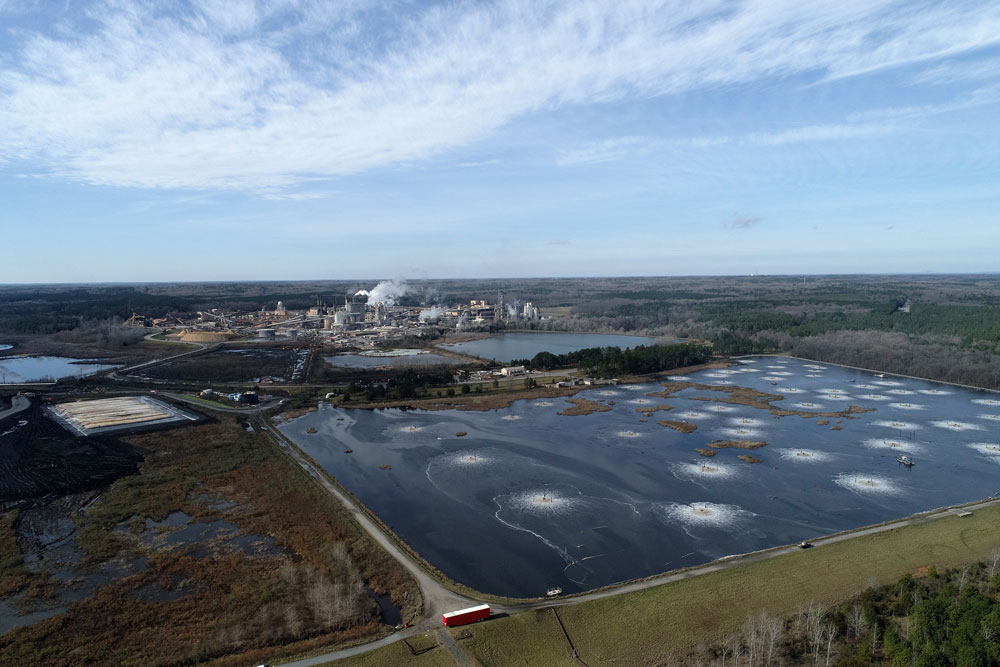
Contact Us
New-Indy has a dedicated phone line for reporting concerns or feedback about our operations. Please call 803.670.2001 and make sure to tell us your name, phone number and the reason for your outreach. If you would like to report an odor observation, please fill out the submission form below. Complete information will enable us to evaluate the issue thoroughly and follow up as needed.
"*" indicates required fields

